
40 minute read
Nevada Beef Council - Checkoff News & Recipe
By Nevada Beef Council Staff Multiple Summer Campaigns Target Nevada Consumers As the summer months waned, the Nevada Beef As the United We Steak campaign concluded on a state Council and Beef Checkoff-funded Beef. It’s What’s and national level, the NBC team was pleased with the For Dinner. program wrapped up a busy few months overall results and engagement. But the efforts to reach of unique campaigns targeting Nevada consumers Nevadans with positive beef messaging didn’t end with with beef messaging and promotions. For Nevada beef this effort. producers, these campaigns leveraged the dollar-perhead Beef Checkoff by combining state-specific efforts launched by the NBC with national campaigns that also focused on Silver State consumers. Also through the summer months, the Beef Checkofffunded “Western U.S. State Campaign” was deployed, which worked to disseminate beef recipe content to consumers in western states from early June through As one example, the “United We Steak” campaign, which early August. Given that consumers in these states have wrapped up over Labor Day weekend, celebrated the a higher propensity for choosing meat substitute options, shared tradition of grilling steaks over the summer, as What’s more, the Ibotta offer resulted in over 550,000 this campaign worked to encourage consumers to choose well as unique aspects of each state when it comes to brand impressions, 12,908 “Add to List” events (instances BEEF instead for their meals. Overall, the campaign grilling. The campaign came to life with an interactive where the shopper took the additional action through the performed very well – consumers in the targeted areas map of the United States made from 50 hand-cut steaks app of watching a video, unlocking the offer, and adding were served Beef. It’s What’s For Dinner. ads almost 20.4 in the shape of each state. Over the summer months, beef to their shopping list), and 7,235 offers redeemed at million times. advertisements were pushed through digital and social media platforms, as well as through traditional media platforms such as radio, and video platforms including YouTube and Connected TV – all in an effort to inspire Americans to grill up their favorite beef meal no matter where they live. The national components of the campaign exceeded expectations even before it concluded, with a full analysis of all campaign metrics still pending. As of early September, the campaign had resulted in over 326 million total impressions, far exceeding the goal of 270 million. There were also over 83 million video views, and audio ads reached over 29 million listeners. Nevada retailers. Of those who took advantage of the offer, 89.9 percent were female, and 10.1 percent were male, with the age ranges of 35-44 (34.8%) and 25-34 (28.7%) being the top age groups. One advantage of the app is that any participating Nevada retailer is included, which means the NBC doesn’t have to limit such opportunities to a small number of retailers. For this campaign, the retailers that saw the highest redemption rates on beef products through the Ibotta app included Walmart at 22.9%, Smith’s at 21.9%, Albertsons at 13.1% and Costco at 9.6%. Other retailers in the top ten included Walmart Grocery (Walmart’s online grocery This campaign included two primary elements. The first was a YouTube video advertising portion that included newly launched United We Steak videos, as well as a “Substituting Beef Is Beyond Impossible” video to address the higher rates of meat substitute consumption in the west. Secondly, a Google Search campaign was launched, the primary focus of which was targeting consumers searching “protein-agnostic” searches, such as consumers searching for non-protein specific dinner recipes or meals. The campaign would then serve these consumers beef-centric recipes. In Nevada specifically, there were over 1.35 million impressions and 851,417 video views through the Here locally, the NBC further leveraged this campaign ordering and pick-up service), WinCo Foods, Sam’s Club, YouTube campaign elements, and 25,620 impressions through state-specific advertising elements, offers for Raley’s, Von’s and Army Military Commissary. and 2,163 clicks through the Google search campaign. cash-back rebates on beef products, and a sweepstakes targeting Nevada consumers offering a chance to win one In addition to Nevada, states of two Traeger grills. The cash-back offer was a $2 rebate included in the Western U.S. for any beef cut, one pound or larger, available through State Campaign were California, the mobile app Ibotta® - a particularly compelling offer Oregon, Washington, Arizona for shoppers at a time when retail food prices remained and Idaho. higher than usual. All in all, these campaigns The Nevada campaign resulted in additional media worked to keep beef top of impressions and engagement with consumers, mind for consumers in Nevada supplementing the advertisements being deployed as and across the nation during a part of the national campaign. In Nevada specifically, summer that held uncertainty, broadcast media impressions surpassed 1.7 million, with but also saw people continuing nearly 1 million additional impressions through other to cook and eat at home more campaign elements, including streaming audio and often than in previous years. banner ads across a variety of online platforms, ads airing via “OTT” television (which refers to “over the top” film and television content provided via a high-speed Internet connection rather than a cable or satellite provider), and mobile geo-fencing ads pushed out through a variety of Please visit NevadaBeef.org or BeefBoard.org to learn more about your Beef Checkoff dollar at work at home and nationally. smart phone apps.
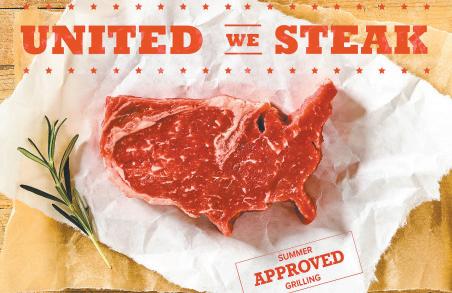
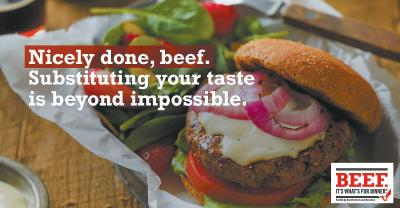

Slow-Cooked Beef and Mushroom Braciole
By Nevada Beef Council Staff This savory dish is an Italian favorite, and using a slow cooker (or pressure cooker) makes preparation of this meal a cinch. Flank steak is rolled up with a savory mushroom topping and slow cooked in crushed tomatoes. Perfect over warm polenta or pasta on a chilly fall day.
Ingredients: • 1 beef Flank Steak (1-1/2 to 2 pounds) • 1 cup finely diced mushrooms • 1/2 cup finely diced onion • 1/2 cup grated Parmesan cheese • 2 slices bacon or prosciutto, chopped (about 1 ounce) • 1 can (28 ounces) crushed tomatoes • 1 tablespoon Italian seasoning blend Courtesy of Beef. It’s What’s For Dinner. • 1 teaspoon salt, divided • 1 teaspoon pepper, divided www.nevadabeef.org • 2 cups cooked polenta, warmed www.mybeefcheckoff.org Cooking (Slow Cooker Method): • Combine mushrooms, onion, cheese and bacon in medium bowl; set aside. • Cover beef Flank Steak with plastic wrap; pound until steak is 1/4 inch thick.
Cook’s Tip: For a larger flank steak, cut it in half horizontally. Pound the two halves, top evenly with mushroom mixture and roll up each to make two smaller, more manageable rolls. • Season steak on both sides with 1/2 teaspoon salt and pepper. Arrange mushroom mixture evenly over steak, leaving 1-inch border on all sides. Starting on long side, roll up steak to enclose mushroom mixture. Secure roll with butchers twine. • Place tomatoes in slow cooker; stir in remaining 1/2 teaspoon salt, remaining 1/2 teaspoon pepper and Italian seasoning.
Add beef roll to sauce, turning once to coat. Cooked, covered, on HIGH 4 hours or on LOW 6 hours or until beef is tender. • Cut braciole diagonally into 1/2” thick slices. Serve over pasta or polenta topped with sauce, as desired.

Pressure Cooker Method (6-quart electric pressure cooker): • Follow slow cooking method steps 1 – 3. • Place tomatoes in pressure cooker; stir in remaining 1/2 teaspoon salt, remaining 1/2 teaspoon pepper and Italian seasoning.
Add braciole to pressure cooker, turning once to coat. Close and lock pressure cooker lid. • Use meat, stew or high-pressure setting on pressure cooker; program 60 minutes on pressure cooker timer. Use quick-release feature to release pressure; carefully remove lid. Continue as directed in step 5. (This recipe variation was tested in an electric pressure cooker at high altitude. Cooking at an altitude of less than 3000 feet may require slightly less cooking time. Refer to the manufacturer’s instructions.)
In the Mind of a Millennial
Beef. It’s What’s For Dinner. And Breakfast. And Lunch. And Snack. By Jill Scofield | Director of Producer Relations, California & Nevada Beef Council
According to my calculations, this is a question that has been asked of me at least 567 As we enter the fall months, there doesn’t seem to be times since the pandemic began. That’s assuming three times a day over the course of 27 an end to this pandemic, and even as life returns to weeks – a highly conservative estimate. “sort of ” a normal pace in many areas, Americans are So as not to simply respond with the obvious answer (BEEF – what else?!), the anticipation of this question has forced me to be more creative and exploratory in my looking ahead to the fall months and holiday season with some uncertainty. culinary skills to provide some new and different options for my growing boys. There are As we face the coming weeks and months, the just so many meatloaf, pot roast, and beef chili meals one can make. Nevada Beef Council and Beef Checkoff will Like many others, I’ve leaned hard into comfort food classics, pulling some delicious ideas from the Beef. It’s What’s For Dinner. website. Some big hits with my family have been a whiskey-molasses shredded beef (we shared that recipe in the last issue of The Progressive Rancher, but you can find it online as well), various iterations of chili, sloppy joes, and a perennial favorite of the Scofield family, good old Tri Tip. continue providing resources and content for consumers who are still navigating a return to the kitchen and home-cooked meals. This fall, beef-centric comfort food classics and home-cooking ideas will be shared with consumers through a variety of digital advertising and online engagement with consumers. This continues our efforts of meeting needs of consumers today amid this changing landscape – like our “United We Steak” campaign that took place over the summer and included an offer for Nevada But aside from dinner, I, like many parents at home with children these last several consumers to get a cash-back rebate on beef products through the Ibotta app, which months, have also been blown away by how much eating is being done before the dinner thousands of Nevadans took advantage of in an era of high food prices at the retail level. bell rings. In our household, we’ve settled into a solid pattern that goes something like this: breakfast at 7:30, snack at 9:30, pre-lunch at 11, lunch at noon, afternoon snack on a continuous rotation from 1:30 to about 4, pre-dinner around 5:30, dinner at 7. As an employee of the Nevada and California Beef Councils, I’ve always been impressed with the vast amount of work done on behalf of this industry – from research on important topics like beef ’s nutrition, to partnerships with influencers, to major Turns out, being locked down with two growing boys will do a number on your grocery advertising campaigns reminding consumers that beef still is what’s for dinner. But over bill and put quite the dent in your pantry. the past several months, I’ve used more of those resources as a mom and a consumer So, needless to say, the money we saved over the last several months from not being able to eat out at restaurants as much was more than made up for by our increasing grocery spend. We obviously weren’t the only ones to experience this. But in looking at the data, turns out that many consumers stocking up on groceries were reaching for animal proteins, and predominately beef. than I ever have. Finding inspiration for the next meal is something that has been tremendously easy to do at BeefItsWhatsForDinner.com. Other consumers are also using and seeing the value in these types of resources, which is a benefit to you, the producer who has continued to work so hard to continue supplying beef in these challenging times. As consumers stocked up their refrigerators and freezers over the last several months, all three major animal proteins saw significant year-over-year growth in retail sales, with beef leading the way. This growth was incredibly high in the early days of the pandemic Just like you, our work hasn’t ended these past months. We adapt, we move forward, and we continue representing the beef industry to our consumers in a variety of ways. And just like you, we’re looking forward to the day when we can do so in easier circumstances. in March, when beef sales spiked at 73 percent year-over-year. But even as the “stock As I typed these last words, the blond head of my youngest son peeped into the home up” mentality waned a bit, protein sales remained high in August, with beef sales still up office with a burning question. You guessed it – “mom, what’s for dinner?” 20 percent year-over-year. Throughout the pandemic, beef has also increased its market share compared to other animal proteins. For the week ending March 1, beef had 53% of the market share, compared with chicken’s 28%, pork’s 13%, and “other” at 6%. Fast forward several months to the week ending August 2, and beef ’s market share had increased to 57% compared to chicken at 25%, pork still at 13% and “other” at 5%. In looking at the dollar sales for meat, starting March 15 through July 12, retail meat dollar sales were up 35.9%, and volume sales increased 22.5% versus the same period last year. This translates into an additional $7.4 billion in meat department sales during the pandemic, which includes an additional $3.3 billion for beef. And just where to put all that extra meat? Another not-so-surprising result of the stock up mentality has been a run on home appliances, particularly deep freezers, which had surged by 45% this year as of early May. Other home appliances also saw huge increases in sales as consumers stayed home, including electric pasta makers (462%), soda machines (283%), handheld cleaning devices (284%), water filtration machines (152%) and air purifiers (144%).


How the Beef Checkoff DrivesDemandforBeef



EXPORT GROWTH The Beef Checkoff’s subcontractor, U.S. Meat Export Federation, aims to keep U.S. beef top of mind and on the plates of international consumers through strategic social networking, online retail, HRI delivery promotions and social welfare initiatives. From January 2020 to March 2020, exports were valued at $2.056 billion.



SAFETY The Beef Industry Safety Summit gathered industry leaders to discuss new pathogen reduction research, foreign material contamination prevention and process control improvements in all industry sectors to continually improve beef safety.
PRODUCER COMMUNICATIONS The Drive newsletter is reaching producers from across the country to share Checkoff initiatives and program successes. In July, 1 6 state beef councils added inserts into the newsletter, sharing their own state-specific news and beef promotion efforts with producers in their areas. More than 360,000 copies of The Drive have been mailed and distributed to producers this year.



CONSUMER TRUST The Beef Checkoffhas successfully developed two beef-production, science-based courses to familiarize students with the beef industry and is being implemented as a pilot program in six states. In addition to educating students, the Checkoff actively engages with teachers from across the country. Virtual professional development events connecting middle and high school educators directly to the science of beef production reached into the ten most urban districts in the nation.
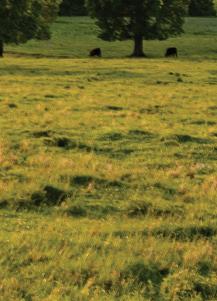

Read about these and other successes at
DrivingDemandForBeef.com.
INNOVATION The North American Meat Institute and the National Hot Dog and Sausage Council showed consumers and stakeholders that hot dogs are the perfect comfort food during tough times, but also the #PerfectZoomFood for professional or casual Zoom calls. More than 30 food-industry leaders participated in the first happy hour.


NUTRITION & HEALTH Beef Checkoff research shows adding lean beef to a healthy diet does not increase the risk of heart disease and reduces diabetes risk factors. This research was shared with doctors and nutrition experts to show that beef is a part of a healthy eating pattern. This study was completed by Dr. Kevin Maki at Midwest Biomedical Research and published in the Journal of Nutrition.

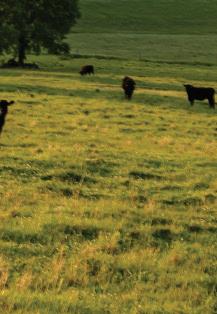
USDA data compiled by the U.S. Meat Export Federation
COVID-19 funding assistance available for producers
By Jessica Anderson, COVID-19 Resource Coordinator
For agriculturists, 2020 has been a trying year. Between stalled markets, rising input costs, weather and fires, farmers and ranchers have had their hands full. We’ve seen commodity markets closing, endured the closures of livestock harvesting facilities and quelled the public fear of a food shortage. As ranchers and farmers, our days are long, stressful and mostly thankless, but the rewards far out way the negatives. It’s why we do it. Though 2020 has been tough, there are some funding opportunities currently available that can help with some of those unforeseen costs many of us have incurred. As Nevada Department of Agriculture’s (NDA) COVID-19 resource coordinator, I can help you with our current relief funding program, the CARES Nevada Agriculture signed the Coronavirus Aid, Relief, and Economic Security Act (P.L. 116-136, CARES Act). This Act resulted in the creation of the Coronavirus Relief Fund (CFDA 21.019), which provides relief funding to states to address the various impacts arising from the pandemic. The NDA is administering more than $4 million to address food insecurity, strengthen or expand food supply chains and provide financial relief to farmers, ranchers and other agribusinesses for COVID-19 related expenses. Thanks to these funds, the NDA created the NAARP to help relieve the stress food and agriculture businesses face in responding to the COVID-19 crisis through business adaptations and diversifications to ensure a safe and adequate food supply. Applicants must demonstrate how financial assistance is needed in response to impacts to their operation in adapting to operating during the COVID-19 public health emergency.
Jessica Anderson is the new COVID-19 Resource Coordinator for the NDA. As a rancher in Nevada, she has first-hand experience of the industry’s hardships, and how to navigate the assistance available. She is also a past high school agriculture teacher and outreach educator for Extension and is passionate about agriculture and helping those involved. She looks forward to helping agriculture producers successfully find and apply for funding that can assist during these difficult times.
Four types of eligible expenses
In a nutshell, the program has four areas for application of COVID-19 related expenses: • Supplies/equipment to safely operate - reimbursement of eligible expenses that were necessary to help protect employees and customers in various agribusiness situations in response to COVID-19. Adaptability and Recovery Program (NAARP). On March 27, 2020, the President
• Housing adaptations - reimbursement for on-farm housing modifications or provision of alternative on-farm housing needed to help slow the spread of COVID-19. • New farmers markets fees - new farmers markets developed in response to disruptions in supply chains and markets due to the pandemic are eligible to have permit fees reimbursed. At least 51% of farmers market vendors must sell Nevada food products to qualify for permit fee reimbursement. • Agribusiness COVID-19 relief assistance – any additional business expenses that would not have been incurred if not for the COVID-19 public health emergency will be considered for eligibility under this general funding category. You must qualify as a small business as designated by the U.S. Small Business Administration to apply for reimbursement under this funding category.
Help navigating the process is available
Depending on the changes you may have had to make to your business operation and/ or infrastructure or supplies/equipment purchases that were made, you may qualify for at least one application area. For example, a producer who took orders online for the first time because markets were closed may be able to receive reimbursement for some of those costs. Other reimbursable costs would include purchasing gloves, masks and hand sanitizer to keep operations open and employees safe. Expenses are reimbursed up to $15,000 and applicants can apply more than once, if needed, until that $15,000 maximum is reached. The deadline for application is December 15, 2020 or until funds run out, on a first come first serve basis. If you think this may be something you qualify for or have further questions, please reach out. We are here to help! You can learn more about the CARES NAARP program at agri.nv.gov/naarp, or feel free to email me at j.anderson@agri.nv.gov. I am happy to answer questions, walk you through the application process and even discuss other programs and opportunities out there. From one fellow producer to another, I am right in the middle of the storm with you. I look forward to hearing from you and hope we, at NDA, can help during these challenging times!
The Secretary of Agriculture Office of Communication selected only 6 projects Nationwide. Cheatgrass research at
Great Basin Rangelands Research Unit
in Reno, Nevada made the list. We want to thank everyone for their support over the years! Read more here: https://scientificdiscoveries.ars.usda. gov/explore-our-discoveries/pacificwest/nv-cheating-cheatgrass/
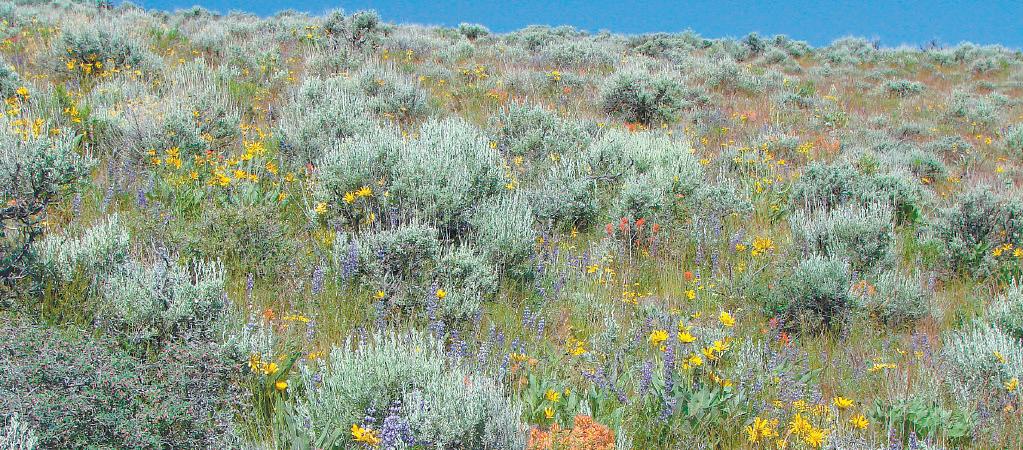
ARS scientists at the Great Basin Rangelands Research Unit in Reno, Nevada, have found success using pre-emergent herbicides as part of an integrated management plan to control
cheatgrass, an aggressive, invasive weed from central Asia. Cheatgrass outcompetes native plants for nutrients and water and deprives animals of dietary variety and quality as well as habitat. The accidental introduction and subsequent invasion of cheatgrass into Great Basin rangelands also increased the frequency, intensity, and acreage of wildfires, which cost millions of dollars annually to fight. Millions more are then spent on efforts to restore these devastated lands. Researchers tested pre-emergent herbicides to control germinating cheatgrass seeds. They later seeded the treated area with selected perennial species, including some developed specifically for rangeland restoration by scientists at the ARS Forage and Range Research Unit in Logan, UT. These plants have the ability to establish and persist in competition with cheatgrass. Over the 10- year study period, the strategy resulted in more than a ninefold increase in perennial grass densities as well as increased shrub and forb growth. This significantly reduced the chance, rate, spread, and season of wildfires. Restoring rangelands to a healthy mix of plants increases the productivity and sustainability of agriculture in the Great Basin while also supporting wildlife and reducing wildfires.
2020 The Year of the Curveballs
Fall has officially come knocking at our door; I hope The General Members meeting will be held on Thursday, address. Please call me at 775/385-3619 or email me at everyone is safe and enjoying this incredible weather. December 19 from 4-8 p.m. This meeting will be also MelindaSarman@gmail.com if you want to ensure we This time of year, our days are full of fall work. For me, through Zoom platform. This meeting will be open to all have your correct information, especially if you have a this is a very satisfying time of year. Most ranches around Nevada CattleWomen members. If you have not taken new email address, or if you simply have any questions. the state are busy preconditioning calves, weaning calves, preg checking cows and shipping cattle; And like many people I wish we had more hay! Just a few days ago I was informed that the Nevada Cattlemen had to make the hard decision to cancel this year’s convention. Therefore, Nevada CattleWomen will be having meetings via zoom for our yearly meetings. The Executive Committee meeting will be held on Thursday, December 3 from 4-6 p.m. The Executive Committee is comprised of NVCW officers, past NVCW President and the Presidents from local CattleWomen Affiliates. Some of the items on the agenda will be approval of minutes for last years meeting, Financial review and part of a zoom meeting previously, Nevada CattleWomen will email out an invite and the agenda to members. Once you have received your email you will click on the Zoom link at the scheduled meeting time and you join the meeting. You are welcome to go to another person’s home to attend the meeting and have several people in a room during the meeting. Some items on the agenda will be guest speakers, local CattleWomen updates, financial statements and budget approval, and WIRED Programs in Nevada (Women in Ranch Education and Development). We have some great speakers for our annual meeting and there will be important business to cover during the membership meeting. The roots of this organization began in 1939. Over the last eighty-one years, we have had good and bad years. But our mission of educating consumers and women producers has stayed the same. We will get through this! Trust me when I say, this is not what we want to do but it is what we need to do for 2020. My next article will have more information on the yearly meetings. I can not thank you enough for what you do to promote and educate the public about production agricultural and the beef industry. Until next time, stay healthy and safe! budget proposals for the 2021 year. As well as, discussion Over the next few weeks, Nevada CattleWomen will be on Region VI Meetings and long-range planning for NV calling any members for whom we do not have an email CattleWomen.
Let’s Talk Ag • EDITORIAL • By Staci Emm Be Ready - Second CFAP Program to be Released by USDA
We are currently under our seventh month of a worldwide pandemic, and the United States Department of Agriculture announced last week there is going to be a second Coronavirus Food Assistance Program (CFAP) to be released.
The Coronavirus Food Assistance Program better known as “CFAP” was a price support assistance program that Nevada producers could access. In Nevada, this provided price supports for dairy, cattle, pigs, sheep, specialty crops and some non-specialty crops. The program was put in place for producers of agricultural commodities that suffered a 5% or greater price decline and producers who had losses caused by market supply disruptions due to COVID-19. There have been additions to the program over the last few months and the deadline was extended. For Cattle, there were designations by weight, and producers were paid a fixe- fee payment based on weight, which determined the livestock category under Part 1 and Part 2. Part 1 was payment eligibility based on livestock sold between January 15, 2020 to April 15, 2020. Part 2 was based on the highest inventory of owned eligible livestock between April 16, 2020 to May 14, 2020. USDA paid out the first 80% of your approved payment within a couple of weeks of the application. My hope is that all livestock producers in Nevada took advantage of this program over the summer. The second payment or the 20% withheld from the overall CFAP payment should have hit your accounts sometime in August. I had several producers comment that the money hit their accounts, and then they got a letter from USDA a few days later. Most commented that it was a nice needed addition to start the fall. I have a zoom call every Friday that is part of a large collaborative project called Native Waters of Arid Lands CARES Group and is dealing with COVID-19 agriculture issues related to land and water issues on tribal lands in the Western United States. USDA is on this call and a USDA-Farm Service Agency representative said to be expecting a CFAP 2 to be released soon that is 100% better than the first one. I really don’t know what 100% better means? What I do know is that producers need to continue their record keeping of cattle numbers and price losses. It always helps when a program is announced if you already have your cattle counts and sale receipts handy. It was nice under the first CFAP program that you could selfcertify your cattle counts, but always try to have your back-up documentation as you never know when it will be needed and/or requested. I personally am hoping that CFAP 2 provides price supports for fall cattle sales. We will have to wait and see what is released. On another note, Nevada producers should also be paying attention to the drought monitor for the Livestock Forage Disaster Program (LFP). As we get past the “D2” designation for 8-weeks in a row, this program begins to kick in for livestock producers on rangeland and pastureland. It also provides support as a result of not being able to graze a permit because of fire. I checked the drought monitor this morning and most of the state is at a “D2” level and eastern Nevada is at a “D3” level. This means that this program is available and to check with your local Farm Service Agency office. The Emergency Assistance for Livestock, Honey Bees, and Farm-raised Fish (ELAP) is also an additional emergency support that I believe provides assistance for water hauling or other losses not covered by existing disaster programs. While this not has been the greatest year, I believe we are surviving and changing. USDA has stepped up and is offering support programs and I hope that producers are using them. I look forward to seeing what the new CFAP 2 is all about. I hope all of you stay safe and have a great September and October.
RANGE PLANTS FOR THE RANCHER Single-Needle Pinyou By Paul T. Tueller, Ph.D., CRMC
The pinyou/juniper woodlands are found
throughout much of the state of Nevada. Earlier I wrote of Juniperus osteosperma the Utah Juniper. This plant and single needle pinyou (Pinus monophylla makep most of the pinyou/juniper woodlands in Nevada and thus are of interest to all who are interested in Nevada’s rangelands. So what is single-needle pinyon? The single-needle pinyon is an aromatic pine tree with short, stiff needles and gnarled branches that grow mostly in coarse rocky soils.. Normal height for this tree is about 15 feet, but the tree can grow as high as 50 feet under ideal conditions. These woodlands cover more that 55.6 million acres in the western Unites States. They along with the Utah Juniper and few other tree species comprise one of Nevada’s most extensive vegetation types covering some 14,178 square miles or approximately thirteen percent of Nevada’s land area. As one travels around the state they appear as tree covered hill slopes on distant mountain ranges. There is some evidence that the woodlands have increased over time but how much and how long the stands will last is up for debate. Single-needle pinyon generally dominates the woodland in the upper and intermediate elevation bands. Nevada designated the single-needle pinyon as the official state tree in 1953. (Nevada adopted a second state tree in 1987; bristlecone pine). Variations in elevation create an ecotone between the Juniper and Pinyon species, where they can commonly overlap at around an elevation of 5,000 feet. They are sometimes scorned by real foresters as they refer to them as part of the pygmy forest
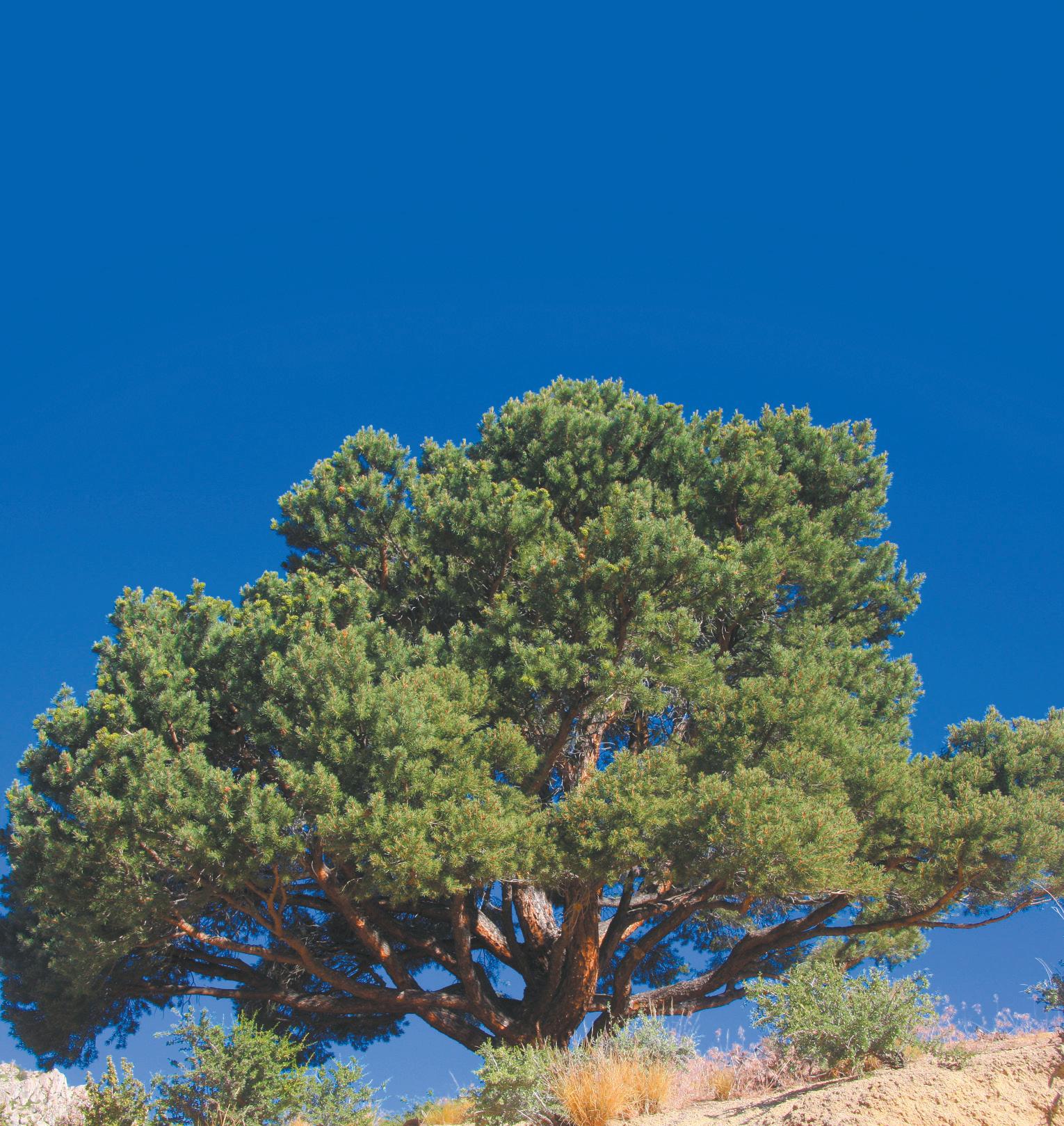
Single-needle pinyon pines have a very slow growth pattern and can take almost a century to reach 12 meters in height. This woodland habitat is not highly adapted to fire. Fuel loads are often not sufficient enough to maintain a devastating fire, although many understory plants are particularly vulnerable to wildfires. Prescribed fire has been applied to pinyon woodlands in order to manage the land, clear the landscape for new recruitment, or for grazing. Many acres of these trees have been cut over for the making of charcoal to smelt ore during early mining. Ranchers have used the wood to warm themselves and provide fence posts to aid in the management of their livestock. Several decades ago some acreage of the woodland were chained. Large chains were drawn behind large caterpillar tractors to topple and cut down the trees to “release” the understory plants for livestock and wildlife use. This practice was stopped after many of the preservationist groups complained. The stands vary from essentially closed stand with little understory species especially forage plants to open stands with a variety of understory species many of which are useful for livestock use. However, as vegetation progresses from an open sagebrush community with scattered trees to dense woodland, herbaceous plants and shrubs decrease and are thus unavailable as forage for livestock. Bleached skeletons of sagebrush remain as the only evidence of the former shrub- and grassdominated community. Scattered remnant clumps of bunch grasses hang on at the peripheries of the tree crowns, where the proper balance of shade, sun, and competition with tree roots for water allows them to persist in this harsh environment. The seeds of the pinyon pine, known as “pine nuts” or “piñóns”, are an important food for American Indians living in the mountains of Nevada. Many pines produce edible seeds, but in North America only pinyon produces seeds large enough to be a major source of food. The pinyon has likely been a source of food since the arrival of homo sapiens in the Great Basin. Archaeological evidence indicates that the range of the pinyon pine expanded northward after the Ice Age, reaching its northernmost (and present) limit in southern Idaho about 4000 BC. Early Native Americans undoubtedly collected the edible seeds, but, at least in some areas, evidence of large quantities of pinyon nut harvesting does not appear until about 600 AD. Increased use of pinyon nuts was possibly related to a population increase of humans and a decline in the number of game animals, thereby forcing Great Basin inhabitants to seek additional sources of food The suitability of pinyon seeds as a staple food is reduced because of the unreliability of the harvest. Abundant crops of cones and seeds occur only every two to seven years, averaging a good crop every four years. Years of high production of seed tend to be the same over wide areas of the pinyon range. The pinyon jay (Gymnorhinus cyanocephalus) takes its name from the tree, and pinyon nuts form an important part of its diet. It is very important for regeneration of pinyon woods, as it stores large numbers of the seeds in the ground for later use, and excess seeds not used are in an ideal position to grow into new trees.


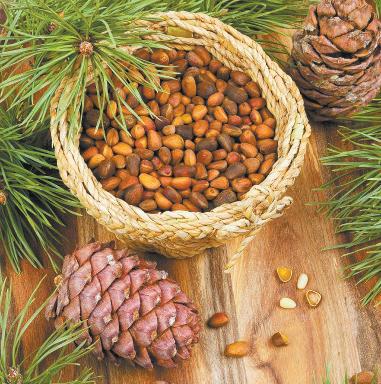
Sugar Content in Horse Feed & Forage By Colorado State University The following information discusses the role that carbohydrates/sugars play in equine health and nutrition. This information has been edited from a fact sheet supplied by Colorado State University Extension and can be found online at: https://stablemanagement.com/.amp/articles/sugar-content-in-horse-feed-and-forage

Quick Facts
• Carbohydrates and sugars play an important role in equine health. • Sugar and starch are absorbed in the upper intestine and fructan has to be fermented in the lower digestive tract (hindgut). • Feed can be tested for sugar levels.
Consult a veterinarian or nutritional consultant to determine the right sugar levels for your horse. • Feed testing facilities can provide instructions on proper sampling and recommended procedures to send samples to the lab. • Different environmental conditions raise fructan levels in pasture grass Much has been written about sugar levels in feeds and forages because they play an important role in equine health. It is inappropriate to describe lowsugar feeds as “low-carbohydrate” feeds because there is no horse feed that is low in “carbs.” The fiber in forage/hay is carbohydrate in nature. Fiber is made up of complex carbohydrates, and the horse’s digestive system needs it to function properly. Feeds vary in sugar and starch content-- the “high-sugar feeds” can be detrimental to horses sensitive due to the starch: • disrupts normal digestion, • exacerbates certain medical conditions • can lead to serious complications such as colic and laminitis. Carbohydrates can be classified into three categories: simple sugars, starches and complex carbohydrates. Simple sugars are a one-sugar unit that is readily and rapidly digested in the upper intestine. Starches are a small group of sugar units connected together that quickly digest and absorb in the upper intestine. Complex carbohydrates are made up of sugar units connected together that cannot be digested and absorbed from the upper intestinal tract. Those carbs must be fermented by bacteria and protozoa in the lower digestive tract or “hindgut” (cecum, dorsal colon, and ventral colon). One important complex carbohydrate in equine feeds is fructan. It is a nonstructural carbohydrate (NSC), as are simple sugars and starches, but it is different because it must be fermented in the hindgut like other “fiber-type” complex carbohydrates. Fermentation of fructan, other complex carbohydrates, and fiber involves a longer process than sugar and starch. It also requires a delicate balance of the proper population of microorganisms in the hindgut. Feeds will vary greatly in their sugar, starch and fructan levels. Fructan is commonly found in certain types of grasses and hays, and the content varies immensely. Fructan is a type of carbohydrate that plants accumulate and store for energy. It can be found in high levels in cool-season grasses and hay made from those grasses. Cool-season grasses such as timothy, orchard grass, brome and ryegrass predominate in horse pastures and hay fields.
Normal Digestive Physiology
A horse’s digestive physiology works best when the horse eats frequently and is maintained on forage or hay. For most horses, little or no grain/ concentrate is needed if they are on a good-quality forage/hay. Yet because of the physical demands humans have placed on performance horses, grains and concentrates are fed to horses. If you talk to the horsemen of years gone by they will tell you that when their horses were working on the farm, they fed them grain throughout the day, not just in the morning and night. When the horsemen worked in the fields with horses and took a break, the horses took a break, and this meant another feeding of grain. Here are some of the important physiological processes of the equine gut. As forage/hay is eaten, the feed is chewed and a profuse amount of saliva is produced by the salivary glands. When there is less chewing, less saliva is produced, and less saliva means less buffering of the acids in the stomach. This results in increased bacterial growth in the stomach, increased acid and the possibility of gastric ulcers. On a roughage diet, the horse normally produces up to 10 gallons of saliva a day, which has a tremendous capacity to buffer stomach acids. If the stomach becomes more acidic than it should be (which happens on a high-grain diet or with infrequent feeding), gas is produced by bacterial fermentation. The horse is incapable of belching, so the result can be pain, colic or in severe situations stomach wall rupture. Normally, the ingested feed doesn’t stay very long in the stomach. It starts emptying food 15 minutes after a meal. Once the food reaches the small intestine, the transit time is slightly longer. It takes a half-hour to 1½ hours to make it to the cecum, which is the start of the hindgut. Feed can take up to three days to travel through the hindgut. It is important for ingested feed to spend the majority of the time in the hindgut. If ingesta (feed) moves through faster than normal, proper digestion and fermentation does not happen and there are serious consequences, the most serious being laminitis and colic.
Differences Between Digestion and Fermentation
There are huge differences in function between the small intestine and the hindgut. The majority of the digestion and absorption of sugar, starch, protein and fats takes place in the small intestine. In the small intestine, absorption of sugars occurs through enzymatic action. In the hindgut, fermentation brings about breakdown of the fiber into digestive derivatives called volatile fatty acids that the body can use for metabolism. This process within the hindgut gives the horse the capability to digest the complex carbohydrates and fiber found in grass and hay. But the microflora in the hindgut responsible for fermentation are sensitive to changes in diet. An overload of high-sugar type feeds or high levels of fructan can upset the normal population of bacteria and protozoa, changing the environment within the hindgut that causes a cascade of problems.
Typically, grain and concentrate rations are higher in sugar and starch than forages. When horses are on a ration or diet that has a high sugar and starch content, it can have dramatic effects on the digestive physiology such as: • There is less chewing, less saliva produced, more acidic contents in the stomach, and possibly more gas or development of gastric ulcers. • The ingested feed moves faster through the small intestine; more sugar/starch substrate enters the hindgut upon which abnormal bacteria feed and proliferate. • The bacteria that feed on sugar and starch grow rapidly, causing normal gut bacteria to die and bringing about inflammatory changes in the gut. The dying bacteria give off endotoxins that are absorbed into the bloodstream. This can potentially lead to laminitis. These changes can result in abdominal pain, inflammatory disease and digestive upset. Thus colic is another possible consequence. • The sugar and starch is absorbed rapidly from the small intestine, resulting in an elevated blood glucose level and a subsequent increase in insulin in the blood. Therefore, three serious problems that occur from ingestion of high-sugar/ high-starch feeds are: laminitis, colic and insulin resistance. The body normally produces insulin from the pancreas, and it is secreted in response to high blood sugar (which occurs after eating and absorbing sugar and starch). Insulin is used to help the cells use the sugar that is circulating in the blood. It helps transport sugar from the blood into the cells where it is used. In a condition called insulin resistance, the affected horse has a high blood sugar level from sugar and starch digestion. A resulting high insulin level occurs and persists because the body’s cells are not responding to the insulin. Therefore, the cells are not able to transport the sugar from the blood into the cells. It could be likened in some respects to Type II diabetes in humans. The insulin is there, but there is a lack of response to it. The body’s resistance to insulin can also be involved in laminitis in that the resultant high levels of insulin may cause a decreased blood flow to the hoof and/or the high insulin may affect the uptake of blood sugar into the laminae of the foot. The resulting effect of either is a cascading set of events that result in laminitis or a painful breakdown in the bond between the hoof and the underlying bone. Other medical conditions that are very sensitive to sugar and starch levels in the feed are: • Gastric ulcers • Cushing’s disease • Equine metabolic syndrome • Osteochondritis dissecans (OCD) • “Tying-up” syndromes such as polysaccharide storage myopathy (PSSM) and exertional rhabdomyolysis (ER)
Detrimental Effects of Feeding
High Fructan Forage or Hay
As mentioned above, fructan is a complex carbohydrate and is not like simple sugars or starch. Typically forages or hay are higher in fructan than a grain-based feed. A feed can be low in sugar and/ or starch, but if it has a large amount of fructan, problems occur in the hindgut. Remember that most of the fructan is fermented in the hindgut. When excessive fructan arrives at the cecum and large colon (hindgut), the bacterial flora is overwhelmed, the normal gut bacteria can die, increased levels of the digestive derivatives from fructan called volatile fatty acids are formed and this can cause digestive upset and colic. When abrupt changes like this occur in the bacterial flora, the results can be local inflammation in the hindgut, endotoxins from the dying bacteria in the gut are released, and laminitis can be one of the outcomes.
Best Horse Feeding Practices
It is best to feed horses only small amounts of high sugar/starch feeds (grains and concentrates) in frequent feedings; this will provide for optimal equine digestion and fewer medical problems. Unfortunately this schedule might not be convenient to many horse owners. It might be hard to divide grain feedings into three to four feedings per day, but that is what is best for the horse’s digestive system. Insulin resistance is treated and prevented mainly by nutritional changes and exercise. The insulin resistant horse should not be on grain or high-sugar concentrate feed, and might need to be taken off pasture grass completely and only fed hay low in sugars and starch. Test hay for levels of sugar and starch as these are the highly absorbable carbohydrates in the diet that quickly raise the blood sugar and the insulin levels. A proper hay would be a prairie hay or a second or third cutting of alfalfa hay processed after the bloom stage. But you cannot tell the sugar content by type of hay or a particular cutting of hay. It should be tested. Even the new Nutritional Requirements of Horses published by the National Research Council (NRC) does not give us a definitive value. Current thought is that a safe sugar content for sensitive horses is 10% or less. Feeds can be classified according to their “glycemic index,” which is an indicator of how a particular feed will elevate the blood sugar level and the subsequent blood insulin level after consuming it. The elevated blood sugar and resulting insulin is called the glycemic response. Horses with insulin resistance should be on a low glycemic index feed because they have an abnormal glycemic response after eating feeds that are high in sugar and/or starch. In a recent study the glycemic index values were determined for 10 feeds. A high index value predicts a high blood sugar response to this feed. They are, from highest to lowest, as follows: 1) Sweet Feed 2) Corn 3) Jockey Oats 4) Oats 5) Barley In contrast, the following were shown to have lower glycemic index values (a low index value predicts a low blood sugar response to this feed). They are ranked from mid-range to lowest: 1) Wheat Bran 2) Beet Pulp 3) Alfalfa 4) Rice Bran 5) Soybean Hulls Fructan will be at a higher level in the plant at different times of the season and at different times of the day. It will be higher in plants in these situations: • after a very sunny day--photosynthesis produces a greater quantity • after a period of stress whether it is nutritional or from drought • after cool evening temperatures-- below 40 degrees Fahrenheit • after quick and rapid drying of cut grass and hay
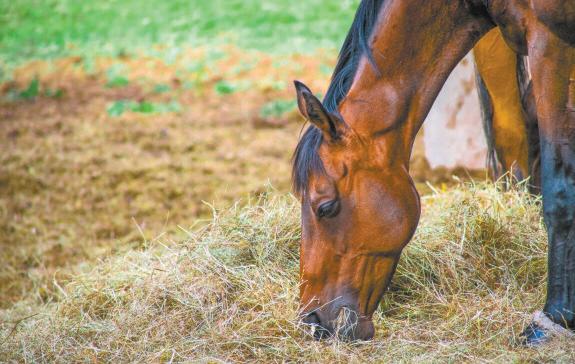
Good Grazing Management
Good grazing management will lower the consumption of fructan and reduce the incidence of colic and laminitis. Good practices should include: • Limit grazing on high fructan grasses to less than one hour a day for susceptible horses. • Use grazing muzzles when necessary. • Don’t overgraze pastures; fructan is higher in the lower few inches of plants • Fructan is lower on fertilized fields; the plant is less stressed so there is less fructan. • Graze early morning; fructan is higher in afternoon/evening after a sunny day. • After a sunny day and a cool night, limit grazing in the morning because the plant has not used up its energy store of fructan during the night.








